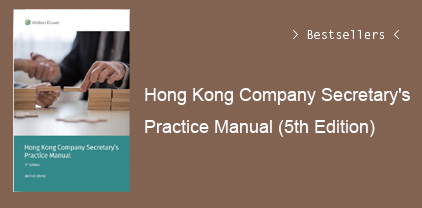Foreword ix
Preface xi
Acknowledgments xv
About the Author xvii
Chapter 1—Why Leadership Matters 1
Leading the Brightest of the Bright 2
Leading the Organization 5
The Leader’s Role—Influencing
Mission, Vision, and Values 6
Losing Focus 7
A Sad Tale (Tail!) 8
Leading Versus Managing 8
You Need Both 9
New Skills 9
Are Leaders Born or Are They Built? 10
Types of Leaders 11
Effective Leaders Must Be Humble 12
Challenges of Leadership 13
The Measure of a Leader 14
Conclusion 18
Section 1—Leading Self 19
Chapter 2—Self-Knowledge: The Inner Accelerator 25
Your Leadership Style 26
The Value of Self-Knowledge 28
Characteristics of Good Leaders 29
The Crisis of Success 32
Building Leadership Ability for Better Effectiveness 33
Commit to the Process 34
Opening Up for Growth 34
Build on Strengths or Improve Your Weaknesses? 36
Experience Matters 37
Building Self-Knowledge 39
Self-Knowledge Through Interaction With Others 9
The Undeniable Link: Lifelong Self-Learning and Leadership 40
Self-Knowledge for a Fulfilled Life 41
Conclusion 42
Chapter 3—Trust: The Leadership Imperative 43
Trust Is a Competitive Advantage Inside and Out 45
Dimensions of Trustworthiness 48
Consulting Experiences 49
Delegation 49
A Healthy Meeting Among Toxic Ones 49
Integrity 50
Group Dynamics 50
Intent 50
Invested in Trust 50
Rebuilding Trust Takes Time 50
Lessons From Consulting Experiences 50
Levels of Trust Development 51
Building Trust 54
Building Organizational Trust 55
When Trust Is Broken 58
Rebuilding Trust 58
Conclusion 62
Chapter 4—Critical Thinking: Creating Your Future 63
What Is Critical Thinking? 65
Thinking Standards 66
Critical Thinking Applied: Phil Holthouse 68
Depth and Breadth 68
Logic 69
Significance 69
Fairness 69
Applying Critical Thinking 70
Myths About Thinking 71
Leading an Accounting Firm
Learning to Think Critically—Like a Leader 72
Purpose 72
Question 73
Information 73
Concepts 74
Inference 75
Assumption 75
Point of View 75
Implications 76
Relationship of the Elements 76
Conclusion 77
Chapter 5—Preparation: Ready for Seizing Opportunity 79
Preparation, Preparation, Preparation 82
Developing Your Leadership Skills 84
Laying the Groundwork by Seeking Input From Others 84
Preparing to Lead Strategic Initiatives 85
Step 1—Prepare a High-Resolution Picture of the End Game 86
Step 2—Clarify Each Staff Member’s Role 88
Step 3—Assessing Potential Opportunities 88
Step 4—Understanding Possible Threats 88
Step 5—Gather and Review Relevant Research 89
Step 6—Budgeting Time, People, and Money 89
Step 7—Develop the Initiative Game Plan 90
Step 8—Launch the Initiative With Overwhelming Power 90
Preparation Is for Action 91
Getting Started 92
Conclusion 93
Chapter 6—Self-Discipline: Be the Master, Not the Victim 97
Leadership Demands Sacrifice 99
Self-Discipline Makes You the Best You Can Be 101
Your Inner Circle Values 102
Delay of Gratification 102
Five Qualities of Self-Discipline 103
Self-Knowledge 103
Strong Relationships 104
Commitment 105
Living Your Values 105
Self-Coaching 106
What Are We Leading Toward? 108
Focused Growth Is a Priority 109
Using Self-Discipline to Focus 110
Building Habits of Self-Discipline 111
Invest Five Minutes Each Morning to Meditate on the Major Areas of Your Life 112
Make Self-Discipline a Part of Your Daily Ritual 112
Dedicate Yourself to Lifelong Learning 113
Accept Responsibility 113
Face Your Fear to Develop Courage 113
The Truth About Self-Discipline 114
Conclusion 114
Section 2—Leading Staff 115
Chapter 7—Teaching, Coaching, and Mentoring: Multiplying Your Leadership 121
Developing Skills Over a Career 123
Training Begins One on One 125
Teaching 126
Training Programs Demonstrate Your Commitment to People 126
A Plan for Adult Learners 127
Creating Purposeful Training 130
Coaching 133
Working One-on-One Raises Your Commitment and Retention 133
On-the-Job Training Helps Coaches and Mentors 134
The Leap From Coaching to Mentoring 136
Great Leaders Mentor 137
Mentoring: Benefits for the Firm 139
Conclusion: The Impact of Training 143
Chapter 8—Accountability: Trust but Verify 145
Why Is Accountability So Important in Business? 146
Accountability Is the Opposite of Permissiveness 148
Increasing Accountability 148
Measuring Accountability 151
How Does Individual Responsibility Factor Into a Group Setting? 152
What Should Partners Know About Performance Measurement? 153
Positive Results of Performance Measurement 154
Implementing Accountability for Positive Results 154
Accountability Through Measurement: Scorecards and Performance Pay 155
Ways to Establish Staff Member Accountability 156
Establish Accountability Through Communication—Set Expectations and Reinforce Success 157
Accountability Through Measurement 158
An Introduction to Measuring Performance 158
After Measuring, Now What? 161
Setting Goals 161
Frequent Feedback 161
Coaching 162
Performance Scorecard 163
Performance Pay 165
Keeping a Well-Rounded Perspective 165
Conclusion 166
Chapter 9—Challenging Personal Growth: Leading the Whole Person 167
A Path to a Better Person 169
Personal Growth, Firm Growth 170
Growing Pains 170
Intentional Success 173
Barriers to Personal Growth 174
Dealing With Change 176
Overcoming Barriers 177
Rule 1: Believe in the Meaning of Your Work 177
Rule 2: Communicate Regularly and Honestly With Team Members 178
Rule 3: Leaders Must Always Be Moving Toward the Larger Goals 178
Rule 4: Recognize Your Team Members 178
Finding Balance 179
Tips for Achieving Personal Growth 180
Conclusion 183
Chapter 10—Empowerment: The Secret to Exponential Growth 185
What Is Empowerment Really? 186
Keys to Effective Empowerment 187
Existing Leadership Philosophies 190
Mistakes: Both Risky and Rewarding 190
Empowering Members of a Team 191
Principles of Empowerment 192
Leading an Accounting Firm Develop a Rational Shared Vision 192
Provide Training and Information for Good Decisions 193
Raise the Level of Conflict 193
Allocate Proper Resources 193
Reward Staff Members for Empowered Behavior 194
Trust People 194
Working With Teams 196
Shared Mission 198
Mutual Respect and Trust 198
Frequent Substantive Communication 198
Shared Processes 198
Different Talents 198
Adaptability and Flexibility 198
Continuous Improvement 198
Building Highly Empowered Teams and Firms 199
The Seven Elements of Empowerment for Teams 199
Communication 200
Conflict Engagement 200
Contribution 201
Connections 201
Cooperation 202
Change Initiators 203
Commitment 203
Conclusion 203
Section 3—Leading Strategy 205
Vision (Chapter 11) 206
Mission (Chapter 13) 207
Values (Chapter 12) 207
Next Steps: Goals and Objectives 209
Goals 209
Objectives 210
The Role of Strategies and Initiatives 210
Example Plan 211
Vision 211
Mission 211
Strategy 211
Goal 211
Objective 211
Action Plan 211
Chapter 11—Vision: Reality in the Future 213
Vision: What It Is and Why You Need One 214
Making the Vision Real for Your Staff Members 217
Our Vision Shapes Our Future 219
The First Vision 219
The Value of a Vision 220
Building Your Vision 223
Get a Mental Start 223
Developing a Vision Statement 224
Things to Keep in Mind as You Begin 224
Bake In the Buy-In 225
Communicating Your Vision 227
Don’t Limit Your Vision 227
Common Stumbling Blocks 228
Strategies for Success 230
Conclusion 231
Chapter 12—Values: The Character, Actions, and Outcomes 233
The Purpose of Core Values 235
Core Values as Standards or Aspirations 236
Core Values Are Worthless Unless They Govern 237
Finding Your Values 238
The Elements of Core Values 241
Our Principles of Service and Communication 241
Go Deep 241
Be Responsible 242
Understand First 242
Deliver Excellence 242
Never Assume 242
Make Their Day 242
Invest in Myself 242
Are Strong Values Realistic? 243
Leading by Example 244
Core Values Help Frame Our Behavior 245
Sustaining Core Values 245
Conclusion 247
Chapter 13—Mission: Making a Difference 249
The Benefits of a Mission 252
Clarifying Your Mission 254
What Do We Do? 254
How Do We Do It? 254
For Whom Do We Do It? 255
More Than One Mission? Maybe So2 55
Six Steps to Developing a Mission Statement 256
Exercise 13-1: Client Statement 257
Exercise 13-2: Problem Statement 258
Exercise 13-3: Statement of Purpose 259
Exercise 13-4: Business Statement 260
Exercise 13-5: Value Statement 261
Exercise 13-6: Writing a Mission Statement 262
Problems to Keep in Mind 263
Developing a Personal Mission Statement 265
Exercise 13-7: Personal Mission Statement 265
Sample Personal Mission Statement Development 266
Past Successes 266
Core Values 266
Identify Contributions 266
Identify Goals 266
Mission Statement 266
Final Thoughts 267
Conclusion 268
Section 4—Leading Systems 269
Chapter 14—Managing Processes for Your Future Firm 273
Setting up Business Processes 274
Advantages to Structured Procedures 277
More Consistent Results 277
Measurable Outcomes 277
Training for Team Members Improves 278
Benefits of Creating the Process 278
Establish Standards, Policies, and Procedures 278
Improve the Consistency of the Client Experience 279
Standardizing Work-Flow Management 279
Process Should Follow Strategy 280
Manage to a Written Strategic Plan 281
Management for the Future 282
The Balanced Scorecard Framework 283
Selecting the Right KPIs 284
Standardizing KPIs 285
Business Process Management Overview 286
BPM Activities 287
Design 287
Modeling 287
Execution 288
Measuring 288
Optimization 288
Issues to Look Out For 289
Conclusion 289
Chapter 15—Building the Future Firm Continuously 291
Commit to Continuous Improvement 293
Critical Success Factors for Change and Growth 295
Leading an Accounting Firm Building a System to Manage Change and Improve Processes 296
Six Sigma 297
Lean Processes 298
Kaizen 299
Flowcharts for Seeing and Improving Processes 302
The Benefits of Continuous Improvement 304
Conclusion 305
Section 5—Leading Synergy 307
Strategic Alignment 308
Objectives Alignment 308
Internal Alignment 308
Chapter 16—Synergy and Alignment: One Plus One Equals Three 313
Building a Shared Purpose 315
Leadership in Tough Times 317
Crisis: Realities and Constructions 319
Understanding 321
Decision Making and Coordinating 321
Terminating 322
Accounting 322
Learning 322
Teamwork 323
Leading Teams for Synergy 324
Team Development 325
Forming 325
Storming 327
Norming 327
Performing 328
Conclusion 328
Chapter 17—Sustaining Leadership: The Ultimate Succession Plan 331
Developing Your Leaders From Within 335
Approaches to Succession Planning 336
Top Down 337
Bottom Up 338
Futuring 339
Targeting Approach 340
Succession Planning Versus the Traditional Replacement Method 342
Potential Labor Crisis 343
Challenges of Implementation 343
Why Succession Plans Fail 344
Your Leadership Development Program 345
Overall Approach 345
Define the Leadership Competencies for Each Level 346
Assess Potential Candidates 347
Measure Leadership Styles 347
Refer to Your Developmental Process 347
Build the Next Generation of Leaders 348
Prepare a Nomination and Application Process for the Program 349
Selecting Partner Leaders 351
Rename Your Next CEO as the Leading Partner 351
Choosing the Lead Partner 352
More of Choosing a Leader 354
Can a Leader Serve Clients? 356
Conclusion 356
Appendix A: 357
Appendix B: 359
Appendix C: 363
Appendix D: 367
Appendix E: 369
Appendix F: 377
































